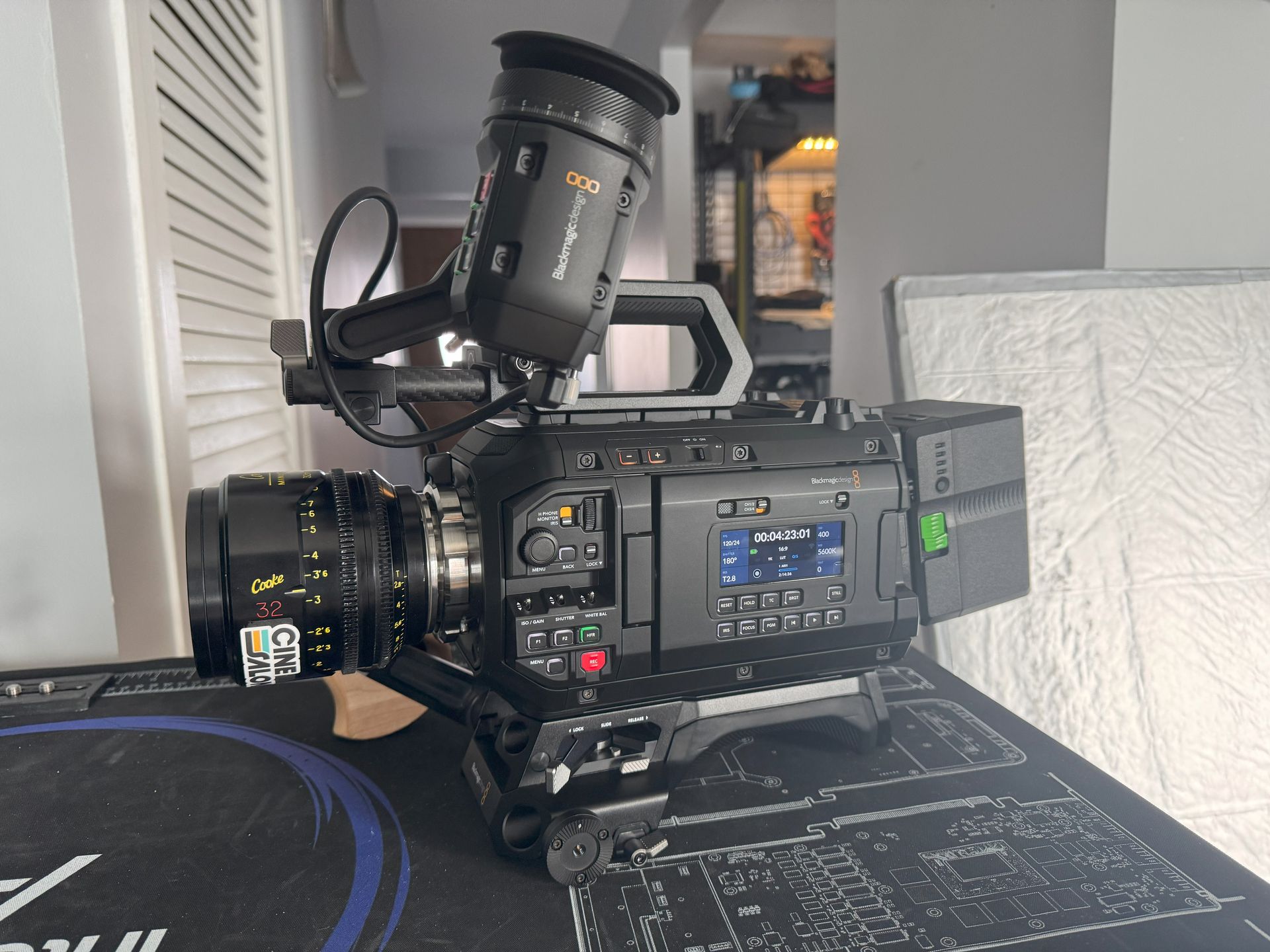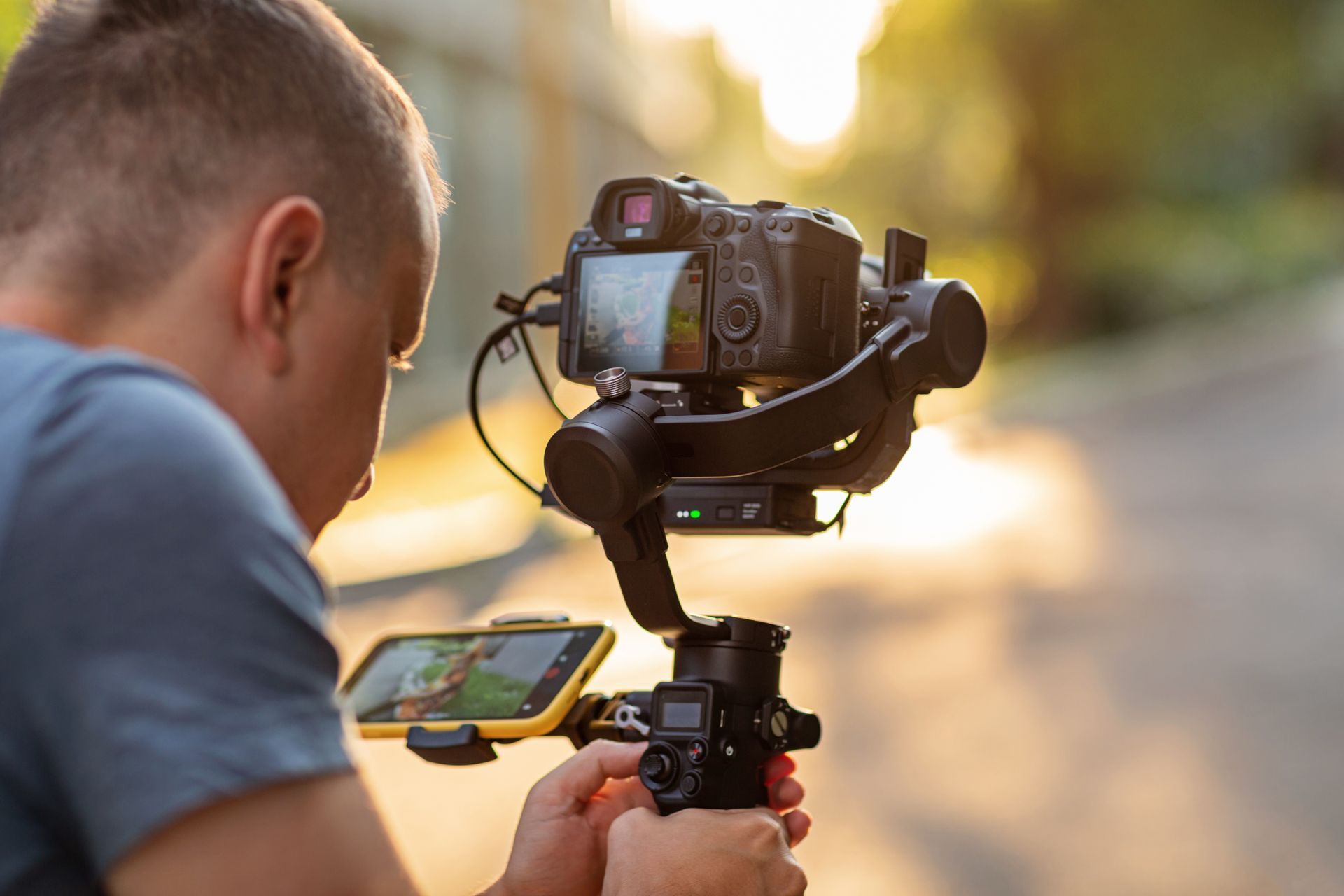Video content rules today's digital age. Almost everywhere we look, videos are present. They're on social media, blogs, and business websites. They're used for entertainment, education, marketing, and more. With the rise of platforms like YouTube, TikTok, and Instagram, videos have become a dominant medium for expression.
The Value of Time-Efficient Video Projects
However, creating videos can often feel like a time-consuming task. It's common to think that quality video content requires hours of work. This is a misconception. In reality, with a bit of planning and the right tools, you can create engaging videos quickly.
That's where time-efficient video projects come in. They allow you to produce compelling content without eating up your entire day. These short projects can help you learn new skills, share your thoughts, or promote your work. They fit perfectly into busy schedules, proving that video creation needn't be a long, arduous process.
This article guides you through five video projects you can do in 25 minutes or less. Whether you're a busy professional, an aspiring content creator, or someone simply wanting to explore the world of video, there's something for you here. So let's dive in and start creating!
The Principles of Quick Video Production
Creating quality video content quickly isn't just about working fast. It's about working smart. Below are key principles that will guide your journey into quick video production.
Planning Ahead
The saying "Failing to plan is planning to fail" holds in video production. Planning involves knowing what you want to communicate, outlining your video's flow, and arranging necessary equipment and props ahead of time. Even for quick projects, having a clear plan reduces time wasted on avoidable mistakes or last-minute decisions.
Keeping It Simple
Simplicity is the secret to rapid video creation. Stick to one central theme or message. Avoid overcomplicated plots or too many special effects. The aim is to communicate effectively in the least amount of time. Simple doesn't mean boring. With creativity, simple videos can be engaging and impactful.
Embracing Creativity
Quick video projects are a chance to let your creativity shine. Think outside the box. Use your surroundings as props. Experiment with different video styles. Remember, no single 'right' way to create a video exists. Your unique touch makes your content stand out.
As we move to specific video projects, keep these principles in mind. They'll make your video production process smoother and more fun. Now, let's dive into our first project!
Project 1: Stop Motion Animation
What is Stop Motion Animation?
Stop-motion animation is a creative and fun way to tell a story. It's a technique where objects are physically manipulated in small increments and captured frame-by-frame. When these frames are played as a sequence, they give the illusion of movement.
Steps to Create a Stop Motion Animation Video
Here is a simple guide to creating your stop-motion animation in less than 25 minutes.
1. Decide on Your Story: Keep it simple. A basic action sequence or a short narrative works best.
2. Gather Your Props: These can be anything from toys, to clay figures, to pieces of paper. Use what you have.
3. Set Up Your Camera: Secure your smartphone or camera on a tripod or stable surface. Ensure it doesn't move during the shooting process.
4. Start Shooting: Move your props gradually, capturing one photo per movement. Patience is key here.
5. Edit and Compile: Use any basic video editing software to compile your images. Set the frame rate to create smooth motion (12-15 frames per second works well).
Remember, perfection is not the goal here, creativity is. So have fun and enjoy the process!
Tools for Stop Motion Animation
You don't need high-tech tools to create a stop-motion video. A smartphone camera, objects for your story, and essential editing software are all you need. Numerous free stop-motion apps are available that can make the process easier.
Stop-motion animation might seem a bit tedious at first. However, with practice, you'll find it's a simple and enjoyable project offering creative possibilities. So get your props ready and let your story come to life!
Project 2: Time-lapse Videos
Time-lapse videos are a sequence of frames taken at set intervals to record changes that happen slowly over time. When played at average speed, time appears to be moving faster, hence "lapsing." This technique can capture everything from sunset and a growing plant to bustling city scenes.
Steps to Create a Time-lapse Video
Here's how you can create your own time-lapse video in under 25 minutes.
1. Choose Your Subject: Time-lapse is excellent for capturing slow changes. Clouds moving, city traffic, or even cookies baking are good examples.
2. Set Up Your Camera: Stability is critical for time-lapse videos. Use a tripod or a firm base to keep your camera steady.
3. Set Your Interval: This depends on your subject. For fast-moving subjects, an interval of a few seconds works. For slower changes, you might set it to a few minutes.
4. Start Shooting: Let your camera do its job. Don't move it during the shooting process.
5. Compile the Video: Use video editing software to compile your images into a video. Speed up the frame rate to create the time-lapse effect.
Patience and a steady camera are critical to an excellent time-lapse video.
Tools for Time-lapse Videos
Again, you don't need sophisticated equipment. Most smartphones today come with a built-in time-lapse feature. If not, there are numerous apps available that can help. For editing, essential video software should suffice.
Creating time-lapse videos is both fun and rewarding. They offer a new perspective on the everyday world. So choose your scene and let the magic of time do the rest!
Project 3: Personal Vlog
What is a Personal Vlog?
A vlog, short for a video blog, is a form of blog with content primarily in video format. Personal vlogs often involve the creator speaking directly to the camera about their day, thoughts, opinions, or experiences. It's a direct and intimate way to connect with viewers.
Steps to Create a Personal Vlog
Here's how you can create your vlog in under 25 minutes.
1. Decide on Your Topic: It could be your daily routine, a hobby, a book review, or simply sharing thoughts on a specific subject. Make sure it's something you're comfortable with and excited to talk about.
2. Set Up Your Camera: You can vlog using your smartphone or digital camera. Ensure you're in a well-lit area and the camera is at eye level.
3. Start Recording: Start speaking about your chosen topic. Be natural and authentic. The aim is to connect with your viewers, not to deliver a perfect monologue.
4. Edit Your Video: Trim unnecessary parts, add transitions, and perhaps some background music. Keep it simple and maintain the natural flow of your content.
Remember, authenticity trumps perfection in vlogs. It's your unique personality and perspective that makes your vlog interesting.
Tools for a Personal Vlog
In terms of tools, a smartphone or digital camera will suffice. For editing, basic video editing software or apps can be used. You may also use a microphone for better audio quality, but it's unnecessary.
Vlogging is a great way to express yourself and share your world. So take a deep breath, switch on your camera, and start vlogging!
Project 4: DIY Tutorials
What are DIY Tutorials?
DIY, or "Do It Yourself," are instructional videos that guide viewers through a process or task, typically involving crafting or home improvement tasks. These are especially popular on platforms like YouTube, where users can learn everything from building a bookshelf to baking a cake.
Steps to Create a DIY Tutorial
Creating a DIY tutorial in under 25 minutes is achievable. Here's how:
1. Choose Your Topic: Pick a simple project that you're familiar with. This could be a cooking recipe, a craft project, or a simple repair job.
2. Prepare Your Materials: Gather all the materials you need for the project. Make sure everything is ready before you start shooting.
3. Set Up Your Camera: Depending on the project, you may want to film overhead or at an angle that clearly shows the process. Ensure good lighting so viewers can see clearly.
4. Start Recording: Take viewers to step by step through the process. Be clear and concise in your instructions.
5. Edit Your Video: Trim any lengthy parts, add text overlays for necessary steps or materials, and ensure the process is easy to follow.
Remember, the goal of a DIY tutorial is to instruct and make the process replicable for viewers clearly.
Tools for DIY Tutorials
You'll need a camera or a smartphone to shoot your video. An optional tripod can be handy for overhead or stable shots. For editing, use any basic video editing software.
DIY tutorials share valuable skills and provide a platform to share your passion and expertise with others. So, pick your favorite DIY project and start creating!
Project 5: Product Reviews
What are Product Reviews?
Product reviews are videos where you share your thoughts and experiences on a specific product. This can range from tech gadgets, books, and makeup, to food items. Review videos help consumers make informed decisions and can attract a broad audience if done right.
Steps to Create a Product Review
Follow these steps to create your product review video in under 25 minutes.
1. Choose Your Product: Select a product you've used and have enough experience with to provide an informative review.
2. Plan Your Points: Note down what you want to cover. This can include product features, pros and cons, pricing, and your personal experience.
3. Set Up Your Camera: Ensure the product is visible and the video setting is well-lit. You can use your smartphone camera or a digital camera.
4. Start Recording: Introduce the product and walk your viewers through your points. Be honest and detailed in your assessment.
5. Edit Your Video: Trim unnecessary parts, add close-ups of the product, and ensure your points are clear and easy to follow.
Remember, transparency and honesty are critical in product reviews. Your objective viewpoint can help others make informed decisions.
Tools for Product Reviews
A smartphone or a digital camera will work for shooting the video. For better audio, you might consider using a microphone. Lastly, you'll need a primary video editing tool to compile and polish your review.
Product reviews can be rewarding, allowing you to share your experiences and opinions while helping others. So pick a product you've been using and let your views be heard!
Wrapping Up Your Quick Video Projects
Now that you've completed your video project, it's time to put on the finishing touches. This final stage is about refining and preparing your video for your audience.
Editing Your Video
No matter which project you choose, basic editing can make a big difference in the final outcome.
1. Trim and Cut: Remove any unnecessary footage. This can include long pauses, mistakes, or irrelevant content. Aim to keep your video concise and engaging.
2. Add Transitions: Transitions smooth the shift from one clip to another. However, use them sparingly and only when necessary to maintain a natural flow.
3. Include Text or Titles: Text overlays can emphasize key points, add context, or provide additional information.
4. Adjust Lighting and Sound: Ensure your video is well-lit and the audio is clear. If needed, use editing software to adjust brightness, contrast, or sound levels.
5. Add Music or Sound Effects: Background music or sound effects can enhance your video, but be cautious of their volume. They should support, not overpower, your primary content.
6. Review and Refine: Watch your video several times. Look for any mistakes or areas for improvement.
Remember, less is more when it comes to editing. Keep it simple and focused on enhancing your content, not overshadowing it.
Sharing and Promoting Your Videos
Once you're satisfied with your video, it's time to share it with the world. Where and how you do this depends on your audience and objectives.
Social Media: Platforms like Instagram, Facebook, TikTok, and YouTube are great places to reach a broad audience. Tailor your video's format and style to suit the platform's norms and your audience's preferences.
Blogs or Websites: Embedding your video in blog posts or on your website can boost engagement and provide value to visitors.
Email Newsletters: Sharing your video in email newsletters can help reach an audience already interested in what you offer.
Remember to promote your video once it's published. Engage with viewers through comments, share your video across platforms, and encourage others to watch and share your video.
The journey from planning to sharing your video is filled with learning, creativity, and fun. Remember, the goal is not perfection, but expressing yourself, sharing your ideas, and connecting with your audience. So embrace the process and keep creating!
Overcoming Common Challenges in Quick Video Production
As with any new endeavor, creating quick video projects can come with a set of challenges. Here are some common ones and ways to overcome them.
Fear of Being on Camera
It's normal to feel self-conscious or nervous when starting. Here's how to overcome this:
1. Practice: The more you do it, the more comfortable you'll become. Start by shooting videos without sharing them until you get comfortable.
2. Be Yourself: Remember, your audience is there to see you. Don't put on a persona. Authenticity connects more than perfection.
Limited Equipment
The lack of high-tech equipment shouldn't stop you. Remember:
1. Start with What You Have: A smartphone is more than enough to start creating good content.
2. Focus on Lighting: Good lighting can make even low-quality video look much better. Use natural light as much as possible.
Lack of Editing Skills
Video editing can seem daunting, but it doesn't have to be. Here's how:
1. Use Simple Tools: Many free tools are user-friendly for beginners. Start with basic edits and learn gradually.
2. Use Templates: Many editing tools offer templates that can make your videos look professional with little effort.
Time Management
Creating videos quickly takes practice. To improve:
1. Plan Ahead: A clear plan can dramatically reduce production time.
2. Batch Tasks: Do similar tasks together. For example, shoot all your videos at once, then move to editing.
Remember, challenges are part of the journey. They're opportunities to learn and grow. Keep experimenting, learning, and, most importantly, enjoying the process. Happy video-making!
Expanding Your Video-Making Skills
You might want to expand your skills once you've mastered quick video projects. Here are some ways to do so:
Learning Advanced Editing Techniques
While basic editing skills are sufficient for quick video projects, learning advanced techniques can significantly enhance your videos. These can include color correction, special effects, and advanced transitions. Numerous online tutorials and courses are available to learn these skills.
Investing in Equipment
While creating great videos with minimal equipment is possible, investing in some gear can improve your video quality. This can include a dedicated video camera, lighting equipment, microphones, and tripods.
Exploring Different Video Genres
Venturing into different types of video content can diversify your skills and keep your content fresh. This can include documentary-style videos, short films, music videos, or animation.
Understanding Video SEO
If you're sharing your videos online, understanding Video SEO (Search Engine Optimization) can help your content reach a larger audience. This includes optimizing your video titles, descriptions, and tags for search engines.
Learning About Video Marketing
Understanding video marketing can enhance your impact if you're using videos for business or professional purposes. This includes understanding your target audience, crafting compelling video content strategies, and analyzing viewer engagement metrics.
There's always something new to learn and experiment with in video creation. Continual learning and experimenting will improve your skills and keep the process exciting and rewarding. Remember, the journey is just as important as the destination. Keep creating and keep enjoying!
Final Words on How to Make Quick Videos
Stepping into the world of video creation might seem daunting initially, but with these five easy and quick video projects, anyone can get started. Whether it's a simple stop-motion animation, a beautiful time-lapse, a personal vlog, a helpful DIY tutorial, or an honest product review, each project offers a unique way to express your creativity and connect with your audience.
Remember, these projects don't require professional equipment or advanced skills. Your smartphone, some basic editing software, and your creativity are all you need to bring your ideas to life. More than anything, it's about experimenting, learning, and having fun.
Moreover, overcoming common challenges, expanding your skills, and delving into new areas of video creation can open up even more possibilities. The world of video is vast and full of opportunities for storytelling, learning, sharing, and connecting.

Get total clarity on your video marketing and paid media with our FREE comprehensive data audit.







